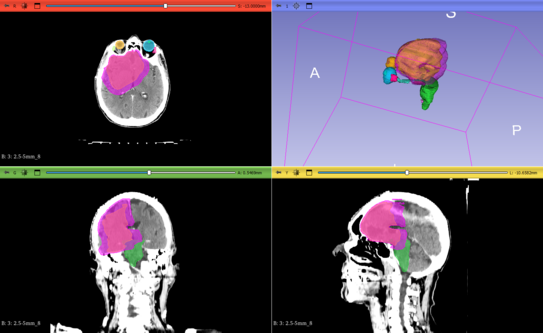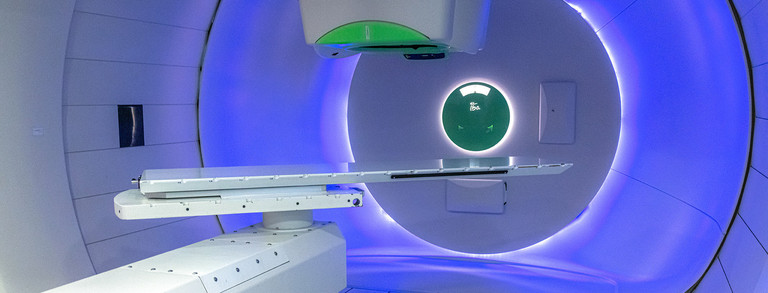Imaging the radiological thickness using proton fields and modern semiconductors
Making use of the distinct ballistic advantages described by the Bragg peak curve, proton-beam treatments achieve a coverage of the target volume with high dose while sparing surrounding normal tissue. Despite the sharp dose fall-off beyond the Bragg peak, the improvement of the conformity of proton irradiations is subject of intense research. Online, adaptive PT is an innovative option to achieve this goal. The adaptive workflow comprises imaging of the patient in treatment position and a fast adaptation of the treatment plan. The former task is realized in the treatment room by proton radiography, which enables detection of set-up deviations and deviations of the proton range. It is addressed in Research Project 1.1: Imaging the radiological thickness using proton fields and modern semiconductors.
Due to the direct imaging of the residual proton range and the verification of the patient set-up, margins can be reduced thereby decreasing the burden of normal tissue with high dose. The compact and robust design of the proton imaging device described in this research project eases a later translation into clinical use. Fast, mixed-signal integrated circuits from CERN will be employed and further adapted to the needs of proton therapy. Thanks to the single-event readout, image acquisitions without electronic noise are possible thereby facilitating low-dose imaging.




